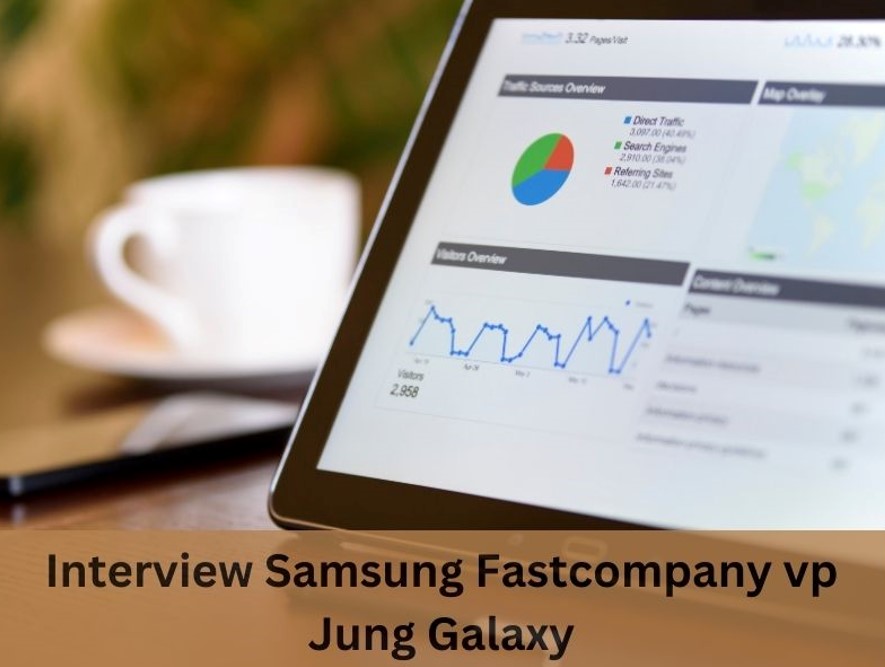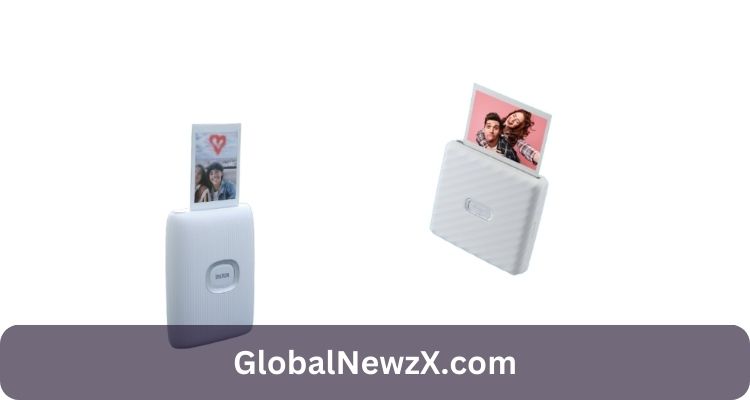Samsung is a leading player in the smart home market with a healthy ecosystem of devices and software. It recently launched a new remote location device called Galaxy SmartTag that helps users locate their belongings using Bluetooth Low Energy (BLE).
Fast Company sat down with Samsung VP Jaeyeon Jung to learn more about the new Galaxy SmartTag and how it fits into the popular SmartThings ecosystem, which had 66 million active devices in December.
How Samsung is defining the future of the smart home
Samsung has always been a pioneer in the smart home, but now it has made a commitment to help push this technology forward. The company is a member of the Connectivity Standards Alliance and will be one of the first brands to deploy Matter, a new communication protocol that will allow smart devices from different brands to communicate with each other.
The idea behind Matter is to make it easier for consumers to build their perfect smart home without having to choose between platforms and apps. The standard is a result of a collaboration between Samsung and Google, but will also include Apple (AAPL), Amazon (AMZN), and more.
While it will take some time for these Matter-enabled devices to become widely available, Samsung says that the system will make it easier for consumers to get their smart home setup up and running. That’s because they’ll be able to use any voice assistant or app that supports the protocol, whether it’s Samsung’s SmartThings or Amazon Alexa.
Another benefit of this is that it will reduce the number of devices and services that aren’t compatible with each other. This means that more smart lights and door locks will work with each other, which in turn will make it easier for customers to decide if they want to upgrade their entire smart home ecosystem or just go with one platform.
In addition to making it easier for consumers to build out their perfect smart home, Samsung is also hoping to make the experience easier to secure. To that end, the company has partnered with Knox Matrix, a blockchain-based platform that uses multi-layered mutual monitoring to protect connected devices from unauthorized access.
It’s a big step forward in helping to make the smart home secure and safe for everyone. It’s one that many companies are struggling to get right, and it’s something that we’re glad to see Samsung making a commitment to.
As a final note, Samsung has also started making more efforts to integrate Bixby into its smart home software, which will allow users to interact with their devices in a more intelligent way. We’re sure to see more integrations like this in the future, and it will only make it easier for consumers to take advantage of the features that are possible with a fully connected smart home.
Galaxy SmartTag
The Galaxy SmartTag is an on-the-go key finder and object tracker. It uses Bluetooth LE to connect with your smartphone and a Samsung SmartThings app.
In the SmartThings app, you can see your SmartTag’s location, as well as a list of all the things you have attached to it. You can also assign a name and icon to your tag. This is done using a Bluetooth connection, and your smartphone will update the tag’s location whenever it receives a ping from another Bluetooth-equipped Samsung device.
When a user is out of range of their device, the SmartThings app will notify them. It’ll also use the phone’s camera to show them where their item is located through augmented reality.
This can be useful if you’re not sure what to do with your item, and you need help finding it. The Galaxy SmartTag can also be programmed to perform automated tasks for IoT devices like smart lights, a thermostat or a smart lock.
Once the SmartTag is paired with your Samsung smartphone, you can turn on its ‘find nearby’ feature within the SmartThings app to see if any other Bluetooth-enabled Galaxy devices have found it in that area. You’ll then be able to view the device’s last recorded position and toggle on notifications that will alert you when your device is found.
If you do find the SmartTag, you can set it up with quick commands via the SmartThings app, and then press or hold the button to start controlling your connected home devices. You can send a text message, turn on or off your smart lights and change the location mode, all with simple press-commands.
The device is a small black square that’s very discreet and can fit in most pockets without drawing attention to itself. It has a button in the middle and a hole up top for attaching it to a lanyard or keys.
There’s a CR2032 coin cell battery inside the SmartTag that’s rated for 280 days of use. The battery life of this device is longer than many others in the market, and it’s easy to replace if you need to.
SmartThings Find
Losing a smartphone or tablet is never fun, but Samsung wants to make it easier for you to find your missing gear. Its latest feature, SmartThings Find, uses Bluetooth Low Energy (BLE) and ultra-wideband wireless to locate a variety of devices, including smartphones, tablets, and Galaxy earbuds.
From early next year, Samsung will expand SmartThings Find’s capabilities to locate tracking tags that attach to other items, too, like a key or wallet. The service works with a wide range of smart appliances and is available for devices running Android 8 or later around the world1, according to Samsung.
Users will need to opt in to the Samsung SmartThings app before they can start using the service, which will require them to sign in with their account credentials. Once they do, the app will display the location of their device on a map and let them ring it if needed.
This new feature is the latest addition to the Samsung home automation ecosystem, which includes smart thermostats, appliances and other smart devices. It also includes a home energy monitoring tool called SmartThings Energy that uses data from about 40 smart appliances to track usage and provide tips for saving money on utility bills, says Mark Benson, head of Samsung’s SmartThings U.S. branch, at a Samsung Developer Conference keynote earlier this month.
The company said it now has more than 70 million helper devices in its SmartThings Find ecosystem, which is growing at a rapid rate. It also announced that it’s now reached its 200 millionth node, which is an impressive number considering how small its network is compared to competing services such as Find My and Tile.
With over 66 million active users, the SmartThings ecosystem is a major part of Samsung’s smart-home business, but there’s still a lot that Samsung can do to expand its reach and improve its user experience. The company is currently working on a range of new features, including voice commands for Bixby and support for unknown Galaxy SmartTags in the ecosystem.
During an interview samsung fastcompany vp jung galaxy with Fast Company, Jaeyong Jung, Samsung’s vice president of hardware and head of its SmartThings Asia division, talked about the Galaxy SmartTag system and how it fits into the larger SmartThings ecosystem. He also offered some insight into how his team is thinking about competing remote location devices in the market, and how they’re addressing them.
Meta Workplace
Samsung is a leader in the design of smart home technology. Its devices are centered around customer experiences and Samsung continues to make investments in new technologies that will enhance those experiences. In this interview samsung fastcompany vp jung galaxy with Samsung Fast Company VP Jaeyeon Jung, we look at how the company is defining the future of the smart home.
The company is also a leading player in the Metaverse, a virtual space that allows users to interact with each other as avatars. This technology has the potential to transform business.
According to a global survey by Ciena, 80% of employees want to be able to work in a virtual space, and 85% of executives are interested in using it. In the workplace, virtual reality will help workers better understand their colleagues and customers, while allowing them to collaborate on projects in an environment where they can see each other.
A number of companies have already launched products that use the Metaverse in the workplace. For example, Pepsi and Budweiser have purchased NFTs (Neutral Field Transmitters), and Nike has submitted trademark applications for digital products.
One of the most popular and successful examples of a virtual world used in the workplace is Facebook’s Workplace platform. It enables online collaboration, text messaging, video calls and data sharing.
It has a familiar interface, and is easy to use. Its features include chat, newsfeed, groups and live streams. It can also be accessed from a mobile device and integrates with the tools your organization uses to get work done.
Unlike many other ESNs, Workplace from Meta is designed for social communication rather than business content management. Consequently, it has a user interface that’s similar to the regular Facebook platform.
While this may seem like a good thing, it can lead to content being easily lost and siloed if it’s not related to work. This is especially true if employees don’t have a good understanding of how to use the platform.
Despite these drawbacks, Workplace from Meta is a strong solution for hybrid work and remote workers. Its emphasis on mobility, along with videoconferencing options and other functionalities, makes it an ideal tool for teams of all sizes, big or small. It’s easy to deploy and is secure enough to be used anywhere.
Also Read: Interview Fastcompany Vp Jaeyeon Smarttag Smartthings











